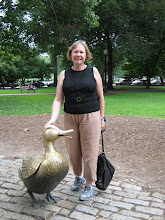Women Astronomers Day is a celebration dedicated to the trailblazing women who have expanded our understanding of the universe. This day sheds light on the many discoveries made by female astronomers and more so the achievements of Maria Mitchell whose birthday was on this day.
“I live and work with three basic assumptions: 1) There is no problem in science that can be solved by a man that cannot be solved by a woman. 2) Worldwide, half of all brains are in women. 3) We all need permission to do science, but, for reasons that are deeply ingrained in history, this permission is more often given to men than to women.” Vera Rubin
Before 1900, a woman who wanted to study the stars had to have a father, brother, or husband to provide entry, and even then the considerable intellectual skills of women astronomers were still not enough to enable them to pry open doors of opportunity for much of the twentieth century. After decades of difficult struggles, women are closer to equality in astronomy than ever before.
The good thing for us, is that we can read about these famous women in picture book biographies and be inspired by not only their hardships but also their achievements.
Caroline Herschel (1750 -1848) was most likely the first female astronomer that we should read about. She was a German astronomer, whose most significant contributions to astronomy were the discoveries of several comets. She was the younger sister of astronomer William Herschel, with whom she worked throughout her career.
• Caroline's Comets by Emily Arnold McCully
• Comet Chaser by Pamela Turner
Maria Mitchell (1818 -1889) was the first internationally known woman to work as both a professional astronomer and a professor of astronomy.
• Maria's Comet by Deborah Hopkinson
• What Miss Michell Saw by Hayley Barnett
• Her Eyes on the Stars by Laurie Hallmark
• The Astronomer Who Questioned Everything by Laura Alary
Willamina Fleming (1857 - 1911) was a pioneering Scottish astronomer. She was hired by the director of the Harvard College Observatory to help in the photographic classification of the stellar spectrum. She helped develop a common designation system for stars and catalogued more than ten thousand stars.
• She Caught the Light by Kathryn Lasky
Annie Jump Cannon ( 1863 - 1941) was known as the “census taker of the sky.” She was a brilliant astronomer that revolutionised the way scientists classify stars.
Henrietta Leavitt (1868 - 1921) was an American astronomer. Her discovery of how to effectively measure vast astronomical distances led to a shift in the understanding of the scale and nature of the universe.
• Look Up by Robert Burleigh
Cecilia Payne (1900 - 1979) was a British-born American astronomer and astrophysicist. Her work on the cosmic makeup of the universe and the nature of variable stars was foundational to modern astrophysics. She determined that stars were composed primarily of hydrogen and helium in her 1925 doctoral thesis.
• The Fire of the Stars by Kirsten W. Larson
Nancy Grace Roman (1925 - 2018) was an American astronomer, the first female executive at NASA, and served as NASA's first Chief of Astronomy throughout the 1960s and 1970s.
• Always Looking Up by Laura Gehl
Vera Rubin (1928 - 2016) was an American astronomer who pioneered work on galaxy rotation rates, and confirmed the existence of dark matter, forever changing the field of astronomy and our understanding of the universe.
• The Stuff Between the Stars by Sandra Nickel
• Shining Star Vera Rubin Discovers Dark Matter by Suzanne Glade

Jocelyn Bell Burnell (1943 - ) is a Northern Irish physicist who, while conducting research for her doctorate, discovered the first radio pulsars in 1967.
• Listening to the Stars by Jodie Parachini
Gabriela Gonzalez (1965 - ) is an Argentine professor of physics and astronomy who works in the USA.. Completing the work that Albert Einstein had begun 100 years earlier, Gonzalez broke ground for new space-time research.
• How to Hear the Universe by Patricia Valdez
These two astronomers don't have a book of their own yet!
Andrea Ghez (1965 -) is a professor of physics and astronomy at UCLA. She shared the 2020 Nobel Prize in physics for finding a supermassive black hole stuffed with 4 million suns at the centre of our galaxy. Among the four female Nobel Laureates in physics to date, Ghez is the only astronomer.
Sara Seager (1971 -) is a Canadian-American astronomer and planetary scientist. She has two main goals: the discovery of another Earth and the search for signs of life beyond Earth.
Australia has 5 top women astronomers who hopefully will have a picture book biography about them someday.






















































